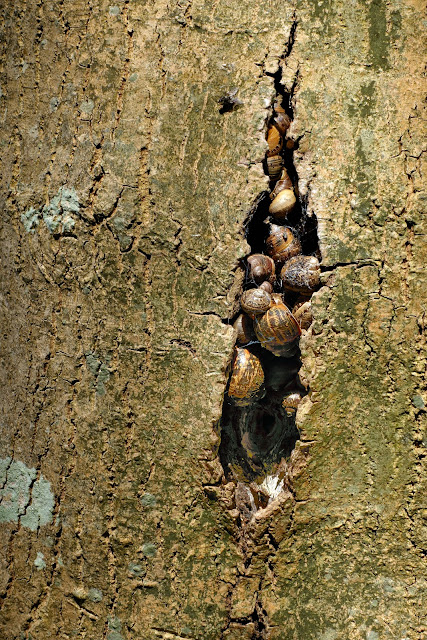The Marloes Peninsula coastal walk was our target for today.This walk starts near Marloes Sands and passes Marloes Mere, an area of wetland pools and marsh important for ducks and other wild fowl. Hen harriers and short-eared owls can often be seen quartering the marsh, not that we saw any I am afraid. After passing an impressive Iron Age fort, the route joins the Coast Path. It stays just inland from the cliff tops, but offers great views of the coast and the islands of Skokholm, Skomer and guano covered Grassholm in the distance. All three are home to important seabird colonies in the summer. The walk crosses coastal fields which are managed to encourage chough, something that we did see, and watched, for a considerable time – magic!
Finally arriving at the Deer Park with spectacular views of Skoma and then onto Martin's Haven, the embarkation point for Skomer.
Islands seen from the Marlos Coastal footpath
The caterpillar of the Oak Eggar (Lasiocampa quercus) moth.
Could not resist the pink sea at this point.
Was I pleased to get this ? – a Chough – and with a compact RX100 camera!
While its black plumage identifies it as a crow, the chough (pronounced ‘chuff’) has a red bill and legs unlike any other member of the crow family. It has a restricted westerly distribution in the British Isles and because of its small population size and historically declining populations it is an Amber List species. It readily displays its mastery of flight with wonderful aerial displays of diving and swooping. Found in flocks in autumn and winter.
Martin`s Haven which is the embarkation point for the isle of Skomer.
Nolton Haven - A really beautiful area to walk, and places to explore. No wonder people want to return here year after year. So many lovely beaches in this part of the world, although photographically, they look the same, they are beautiful!



















































